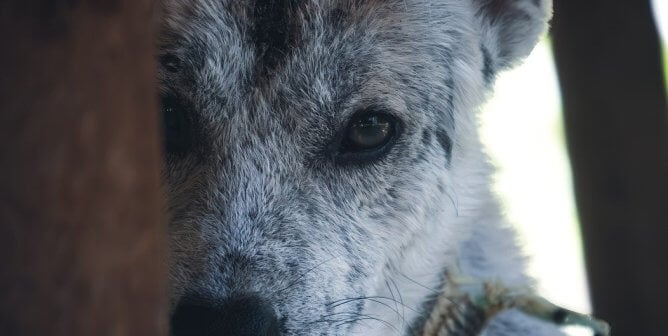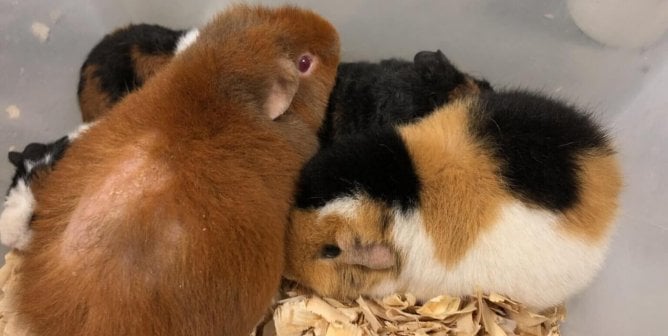Facts on Reptiles
The lot of a reptile captured or bred for the pet-store trade is grim. Living conditions during the trip from the breeder or dealer are typically cramped and unsanitary, and many reptiles do not survive the ordeal. Those who do will probably have health problems that don’t show up until months later. Unfortunately, reptiles are perceived as requiring minimal care rather than specialized care, so they’re big business—more than 4 million reptiles are kept in U.S. households.1 Pet-store employees are rarely trained to tend to the complex needs of reptiles effectively and therefore are not in a position to educate prospective reptile caretakers.
Snakes
Depending on the variety, snakes can live for decades and grow to lengths in excess of 5 feet. They require tanks at least big enough to stretch out fully, frequent checkups, and care by a veterinarian who specializes in reptiles. Fresh water and a spotless environment must be provided at all times. Most snakes are carnivorous. They are susceptible to a variety of parasites as well as blister disease, respiratory and digestive disorders, and mouth rot. Strictly controlled daytime and nighttime temperatures and the careful application of pesticides are required in order to guard against mite infestations.
Iguanas
Green iguanas are among the most frequently abandoned animal companions, likely because people find out too late what is required to care for them. A properly cared-for iguana can live for more than 20 years and grow to be more than 6 feet long. The enclosure for a full-grown iguana should be at least 18 feet long, humidified, and maintained at a particular temperature with specific timetables for darkness and ultraviolet light. Common problems for captive iguanas are metabolic bone disease from calcium deficiency, mouth rot, respiratory disease, abscesses, and ulcers. They’re also strict vegans, limited to a very specific range of greens and fruits. Costs for food, an enclosure, lighting, and vet bills can total hundreds of dollars per year. It takes about a year of daily interaction to socialize an iguana, and even then, sexually mature males will be very aggressive six months out of the year if they see their own reflections or if they are confronted by other iguanas.
Geckos
These small, frail-looking lizards can often live up to 30 years and require a very particular environment without the slightest variance in temperature. They feed on insects and baby mice. Although wild geckos are found throughout temperate and tropical regions of the world, most of the ones offered for sale are captive-bred.
Turtles
In contrast, most of the North American species of turtles available in pet stores have been taken from their natural habitats. All other species are probably captive-bred—more than 17 million freshwater turtles were exported from the U.S. between 2011 and 2016.2 Most states have laws either banning or restricting the sale of turtles, so it is likely that any you see at a pet store were captured illegally or raised in less-than-humane conditions. Since parasites, bacteria, and fungi prey on weak or stressed turtles, the health of a store-bought turtle is questionable. Just like any other reptile, a turtle has needs that are very specific: controlled temperatures, enough water to swim in, a large housing area, and a varied diet. The average lifespan of an aquatic turtle is 25 years, while a land tortoise could outlive a human caretaker.
Caution
There is a risk of salmonella infection associated with owning any reptile. People with compromised immune systems are particularly at risk of serious illness or death from salmonella, and the CDC recommends that “turtles and other reptiles should not be kept as pets in households with young children.”3 If you or anyone close to you is in one of these categories, rethink your plan to bring a reptile into your home—even healthy-looking animals can carry the disease. Many reptiles are brought into the country with little to no inspection or quarantine.
Adoption
Welcoming a reptile into your home means a commitment of time, space, and money. You’ll need to provide the right temperature and humidity as well as specific light/dark cycles that might not be convenient for you. Back-up power is necessary to keep a constant temperature in the event of a power failure. Most reptiles are carnivores, requiring a freezer stocked with dead animals. In all, costs for food, an enclosure, lighting, and vet bills can total hundreds of dollars per year.
Purchasing a reptile caught in his or her natural habitat encourages the removal of wildlife from delicate ecosystems. Buying captive-bred animals only encourages breeders to replenish their stock. If you must have a reptile as an animal companion, please consider adopting one from a local animal shelter or rescue group.
References
1Insurance Information Institute, “Facts + Statistics: Pet Statistics,” American Pet Products Association’s 2017-2018 National Pet Owners Survey, accessed 10 May 2018.
2“Restrictions Sought on Unsustainable Export of America’s Imperiled Turtles,” The Center for Biological Diversity, 27 March 2018.
3Centers for Disease Control and Prevention, “Reptiles and Amphibians,” 15 April 2024.








